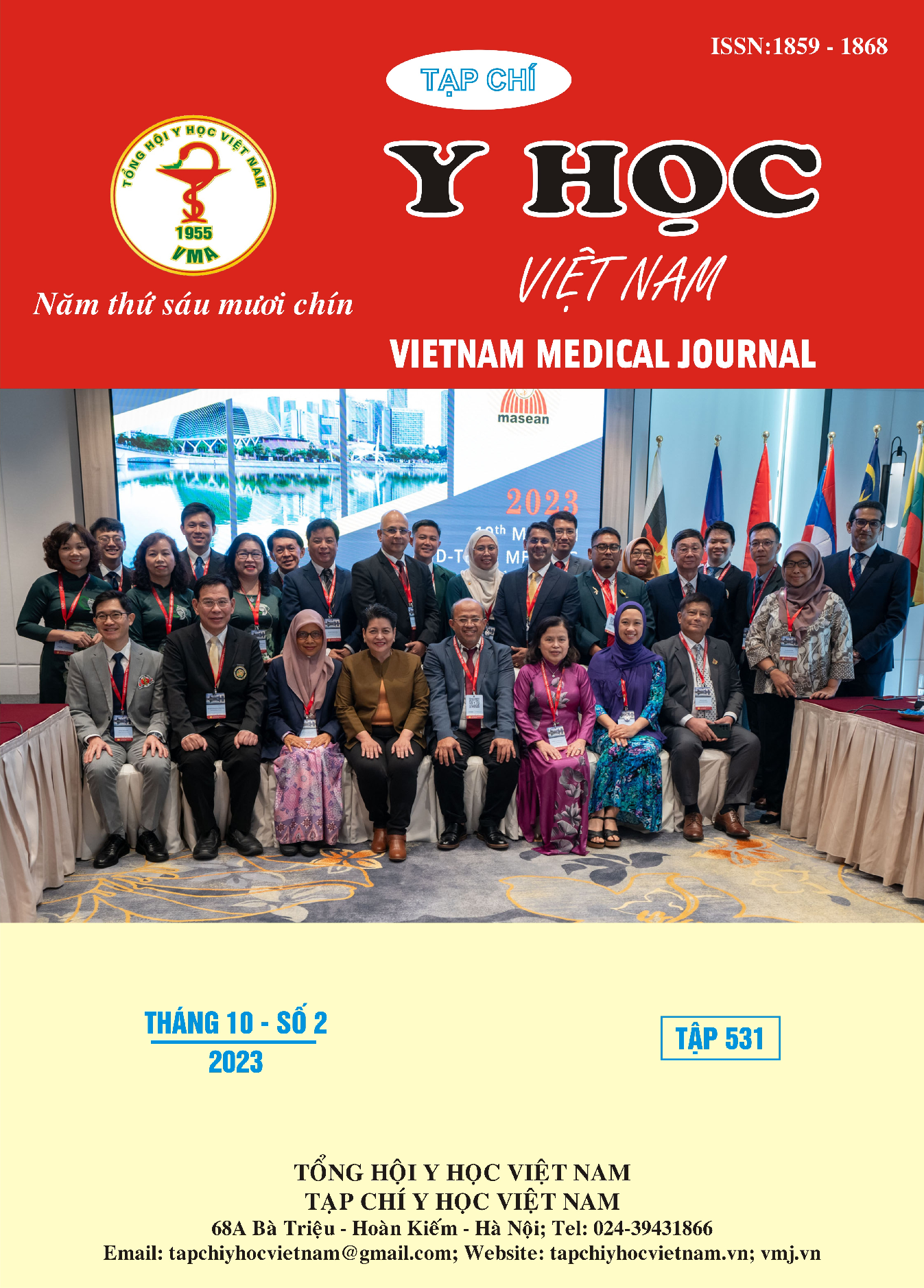CHARACTERISTICS OF PYOGENIC VERTEBRAL OSTEOMYELITIS PATIENTS AT UNIVERSITY MEDICAL CENTER HO CHI MINH CITY
Main Article Content
Abstract
Background: Pyogenic vertebral osteomyelitis (PV0) accounts for 3-5% of all causes of musculoskeletal infections. The incidence of PVO is increasing with ages (1). If PVO is not treated promptly, this could lead to vertebral destruction, irreversible spinal cord injury, neurological complications (paresthesia, limb weakness, loss of sensation, numbness), sepsis, and also death in some cases. Early diagnosis and antibiotic treatment improve the prognosis for patients, most cases of PVO are managed successfully with antibiotics. There are many studies on PVO around the world, but the research results are often inconsistent. In Vietnam, no research PVO has been published. Objectives: To investigate the clinical, laboratory test, radiological and microbiological characteristics of PVO. Methods: A retrospective, descriptive study was carried out on 42 patients (≥ 18 years old) with treated as inpatients at University Medical Center Ho Chi Minh City from November 2018 to November 2022. The patients were recorded demographic information, clinical symptoms, clinical examination, blood test results, blood cultures, cultured biopsies, and MRI images of the spine. Data were collected through review of medical records. Results: Among 42 patients enrolled in the study, the median age was 68.1 ± 11.91 years and females was predominates with 69.05%. Regarding co-morbidities in the study, we recorded the prevalence of hypertension at 78.57%, diabetes at 47.62%, chronic kidney disease 16.67%, cirrhosis 2.38%, and autoimmune disease 11. 9%. The most common clinical symptom is back pain, which was described in most of the patients 97.6%, the mean onset time was 14 days, 83.33% of patients had fever 78.81% had numbness, 14.2% had symptoms of muscle weakness, and 11.9% of patients had dysuria. The study recorded an elevated inflammatory marker in most cases, an increase in CRP with an average value of 103 [34 - 171] mg/L, an increase in the first-hour erythrocyte sedimentation rate with an average of 89.5 [70 -116] mm. Our study's Characteristics of MRI recorded in patients with lumbar spine injury accounted for the majority of cases with 83.33%. 92.86% of patients had bone marrow edema, 52.38% had decreased vertebral height, 47.62% had spinal stenosis, 19.2% had epidural abscess, 85.71% had abscess vertebral column, 61.90% had pelvic lumbosacral abscess, 57.14% disc destruction. In the study, the most common agent was Staphylococcus aureus with 8 cases accounting for 53.33% of the total number of positive cultured patients. Conclusion: Our study reported the characteristics of patients had PVO with high mean ages and female predominance. Hypertension and diabetes are the two most common comorbidities. The most common symptoms were back pain, fever, and numbness in the legs, less commonly weakness and dysuria. CRP and VS were elevated in patients with PVO, which could be diagnostic signs. MRI showed lumbar vertebrae were affected. PVO affects mainly the lumbar spine. Our study recorded common lesions on MRI including bone marrow edema, paravertebral abscess, lumbosacral abscess. The dominant pathogen of PVO was Staphylococcus aureus.
Article Details
Keywords
Pyogenic vertebral osteomyelitis, Vertebral osteomyelitis
References
2. Boody, B.S., D.A. Tarazona, and A.R. Vaccaro, Evaluation and management of pyogenic and tubercular spine infections. Current Reviews in Musculoskeletal Medicine, 2018. 11: p. 643-652.
3. Issa, K., et al., The epidemiology of vertebral osteomyelitis in the United States from 1998 to 2013. Clinical Spine Surgery, 2018. 31(2): p. E102-E108.
4. Yu, D., S.W. Kim, and I. Jeon, Antimicrobial therapy and assessing therapeutic response in culture-negative pyogenic vertebral osteomyelitis: A retrospective comparative study with culture-positive pyogenic vertebral osteomyelitis. BMC Infectious Diseases, 2020. 20: p. 1-8.
5. Kim, J., et al. Outcome of culture-negative pyogenic vertebral osteomyelitis: comparison with microbiologically confirmed pyogenic vertebral osteomyelitis. in Seminars in Arthritis and Rheumatism. 2014. Elsevier.
6. Gil, J.J.F., et al., Vertebral osteomyelitis: Clinical, microbiological and radiological characteristics of 116 patients. Medicina Clínica, 2020. 155(8): p. 335-339.
7. Mendez, G., et al., Acute vertebral osteomyelitis a descriptive study of a series of 40 cases in a tertiary care hospital. International Journal of Infectious Diseases, 2018. 73: p. 150.


